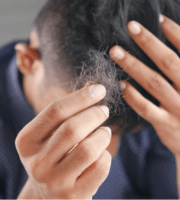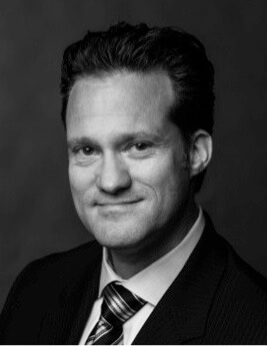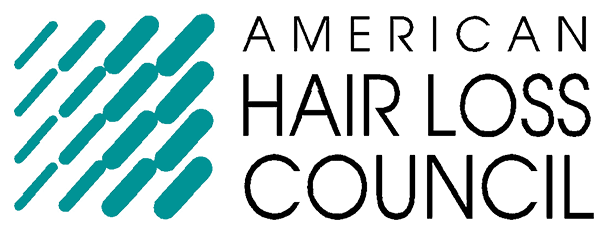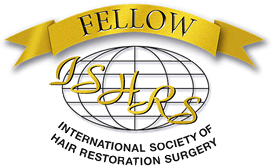What happens after a hair transplant?
by Alan J Bauman MD ABHRS-Certified Hair Restoration Physician
While patients report undergoing a hair transplant as a life changing experience that restores their confidence and youthfulness and improves their quality of life, it is important to understand that the change doesn’t happen overnight. Results take time and treating hair loss successfully for the long-run takes a commitment that doesn’t end after your transplant. Note: Transplanted hair is relatively permanent, but your other hair may not be!
What to expect during recovery
The procedure itself is comfortable and the new, less-invasive “FUE” approach have made recovery faster and easier for patients. Because there are no staples or stitches with today’s advanced surgical techniques, there is no tension on the skin, and most patients are able to resume regular activities within just a few days following a hair transplant. Patients can expect a little soreness following FUE surgery for maybe a day, but most don’t require anything stronger than over-the-counter pain medication.
Accelerating healing and regrowth
Today, more and more doctors performing hair transplantation are using Platelet Rich Plasma (PRP) to help wounds heal faster and reduce the cosmetic downtime from a hair transplant procedure. PRP is used to accelerate the body’s recovery mechanisms and create an optimal environment for wound healing to occur comfortably and quickly. Many hair transplant patients also often opt to use a physician-prescribed laser therapy device to help accelerate healing and decrease discomfort after surgery.
A multi-therapy approach
The goal for the hair transplant is to replace the hair that you’ve lost, but continued treatment may be necessary to protect that hair that you have from suffering the same follicular fate. Often, as it is in many areas of medicine, “multi-therapy” or a combination of several different treatments, may have the best success for achieving long-term success. Treatments like PRP, PDOgro™, laser therapy, custom-compounded topical minoxidil like Formula 82M, and other interventions can be part of longterm treatment plan to help protect hair follicle function in the non-transplanted hair.
A long-term investment
One of the hardest parts of treating hair loss is helping the patient understand that it is a longterm investment and process. Just like hair loss, initial changes in hair regrowth take time and can be subtle before they are noticeable to the naked eye. This is especially true for hair transplant patients. Continued care and commitment is necessary to ensure optimal results from the procedure and also to effectively maintain the non-transplanted hair. It is essential to follow your doctor’s post-op instructions carefully and thoroughly and keep your recommended appointments to ensure the best long-term results.
Routine follow-ups are important in order to determine how well the follicles are responding to the treatments, and to see if changes should be made in the therapy regimen.
Approximately every two to three months following the procedure, you will be scheduled to return to the office where they will monitor the healing of the donor area and hair growth, which will begin to be visible in approximately four months. All followup appointments are critical to the success of the procedure and must be kept. For patients who live out of the area, arrangements can be made to schedule “virtual” follow-ups (via phone or video call) to carefully monitor the recovery progress. It is important to keep in mind that it can take more than a year to see the full, final results from any procedure or treatment. This is longer than many other cosmetic treatments or procedures that patients have experience with so many patients are tempted to end their hair treatments too soon. Ending treatment prematurely will disrupt any progress that had been made.
Timing your transplant
So when is the right time for a hair transplant? That depends. When it comes to hair loss, the biggest takeaway for patients should be that early intervention is the key to preventing and managing hair loss. There are many considerations your hair restoration physician will discuss with you in determining if you are a good candidate for hair transplant surgery. Among these deciding factors is lifestyle, health conditions, health of the scalp, amount of healthy “Donor Hair,” hair loss classification, commitment to follow-up care and age.
Patients are always encouraged to seek the counsel of an ABHRS-certified hair restoration physician while in the early phases of hair loss. Early effective medical intervention can prevent the need for immediate transplantation and also reduce the amount and size of hair transplants needed over time.
For more information on what kind of results you might achieve with an advanced FUE hair transplant, please visit www.baumanmedical.com or call 561-220-3480.
If you’re considering a hair transplant, ask your board-certified hair restoration surgeon about which of these advanced FUE techniques may be right for you:
- SmartGraft FUE: SmartGraft is an FDA-cleared mechanical, minimally-invasive surgical hair transplant instrument that works like an extension of the surgeon’s hand, allowing the removal of individual follicular units from the donor area located at the back of the patient’s scalp which are then implanted into the bald areas. This means no scalpels, sutures, or staples for the patient in the donor area – leaving absolutely NO linear scar.
- ARTAS Robotic-Assisted FUE System: The FDA-cleared ARTAS robot is a state-of-the-art medical device that assists in hair transplant surgery by helping to safely and effectively extract intact hair follicles for transplantation using the FUE technique. The robot’s sophisticated micron-level precision allows patients to benefit from an unprecedented level of safety; accuracy, efficiency, and comfort during their hair transplant procedure.
- NeoGraft FUE: The original “game-changing” device for Follicular Unit Extraction is still in use today to help surgeons extract grafts from the Donor Area without leaving behind a tell-tale linear scar. Just be sure your surgeon is an experienced full-time hair restoration physician, not just someone who’s added NeoGraft to a full menu of cosmetic services.




 Falling Out of Love with Your Hair? Fall in Love Again with Bauman Medical’s Help
Falling Out of Love with Your Hair? Fall in Love Again with Bauman Medical’s Help Top 5 Non-Surgical Treatments
Top 5 Non-Surgical Treatments Dr. Alan Bauman named among The Best Hair Transplant Doctors In The World Today: 2023 Edition by ApeToGentlemen/Spex Hair
Dr. Alan Bauman named among The Best Hair Transplant Doctors In The World Today: 2023 Edition by ApeToGentlemen/Spex Hair A Quick And Handy Guide To Hair Loss In Teens
A Quick And Handy Guide To Hair Loss In Teens Dr. Alan J. Bauman, M.D.Hair Loss & Hair Transplant ExpertBoca Raton, FL
Dr. Alan J. Bauman, M.D.Hair Loss & Hair Transplant ExpertBoca Raton, FL






